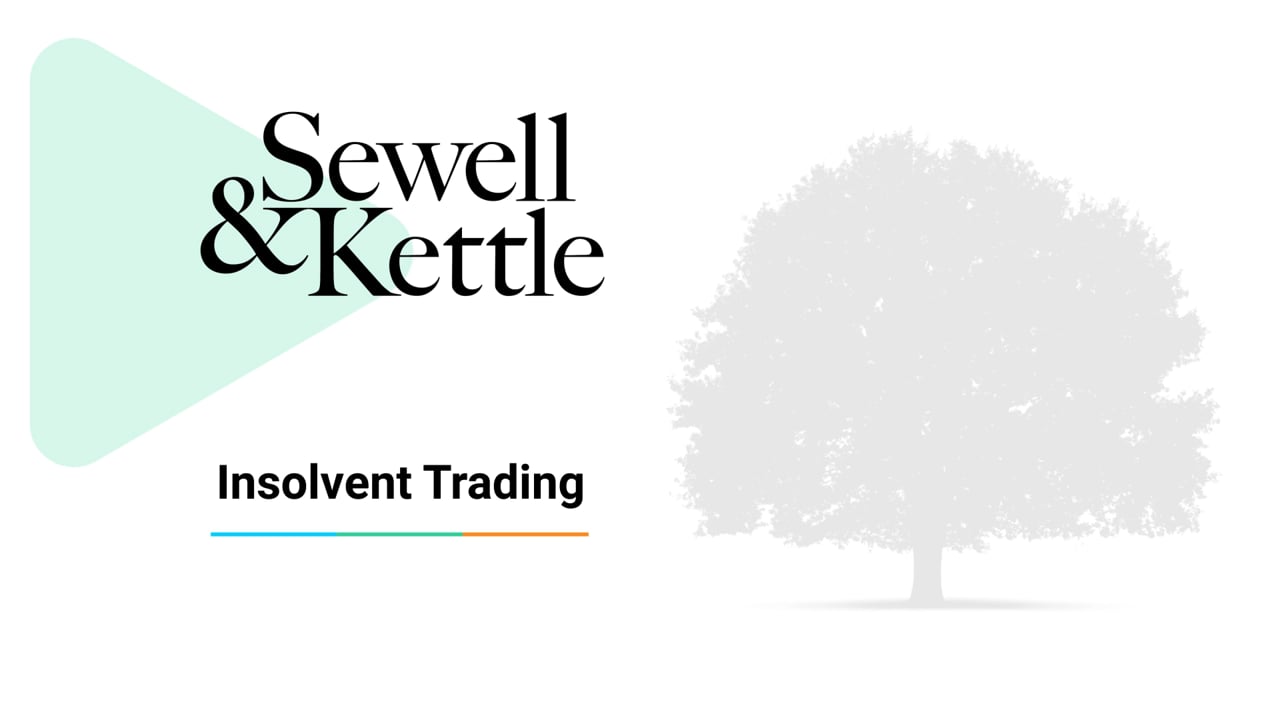Video “Insolvent Trading”
Watch Sewell & Kettle Lawyers Principal, Ben Sewell, break down the prohibition on insolvent trading in his own words in this brief explanatory video.

The prohibition against insolvent trading is a duty of all company directors to prevent their company from trading (i.e. incurring debts) while insolvent. It is illegal for a director of a company to allow an insolvent company to continue to trade, while having reasonable grounds for suspecting insolvency. The consequences can be serious: read our guide to find out more.
Learn more from our blog post Insolvent Trading
Video transcription
Insolvent Trading
What is Insolvent Trading?
Insolvent trading is all about fear. It instills fear in directors that, if they continue to trade whilst the company is unable to pay its debts (i.e.they go out and keep placing orders and incurring debts), that those directors will be sued if the company goes into liquidation.
What are the Penalties for Insolvent Trading?
They are very serious.
The first is that a civil penalty can be imposed by ASIC for up to $200,000. The creditors, through the liquidator, are able to sue the director and recover compensation for loss incurred as a result of the insolvent trading. There is also the potential for criminal prosecution.
Having said that, we’re in a strange scenario in Australia because there are very few insolvent trading cases that are actually running. Empirical research has shown that there were only about 63 judgments from the 1960s to 2004. So, the chances of a director being sued for insolvent trading are very low. However, the law works by directors being compliant, so there is a general expectation in the market that directors will be compliant with the prohibition. Simply said, 99% of people will comply with the law because they are law abiding.
How can I Protect Myself from an Insolvent Trading Claim?
If you’re a director of an insolvent company and you want to protect yourself against an insolvent trading allegation the first thing to consider is whether you can implement a safe harbour restructure to protect your position. This involves developing a plan that would (at least) put the company in a better position than it would be in a liquidation scenario.
The best first step, in my view, is for the director to look at engaging professional advisers who are able to give them prompt analysis and help them decide upon the best pathway forward.
